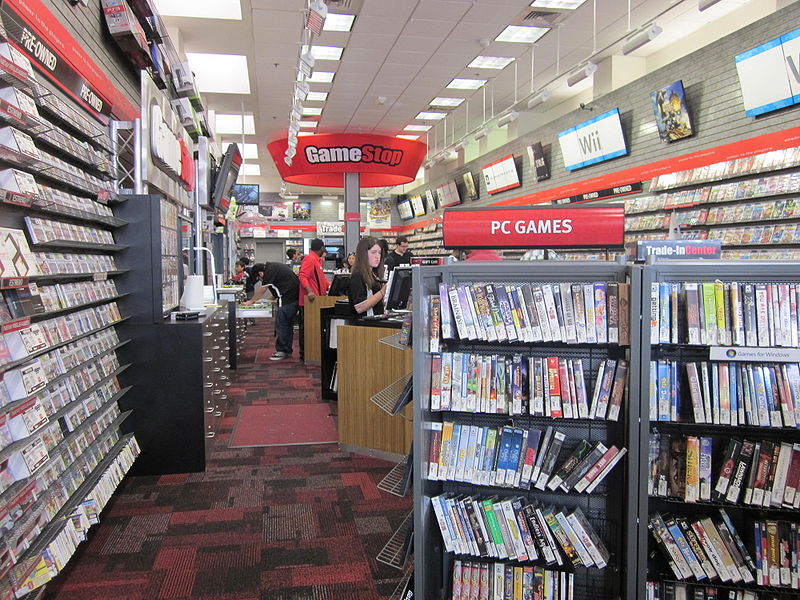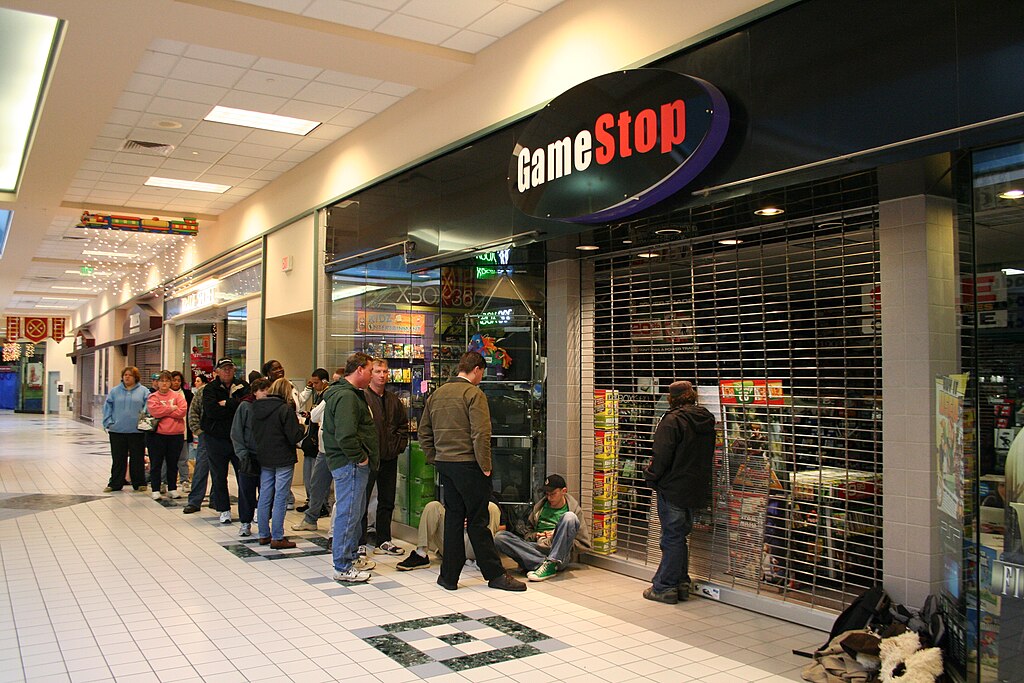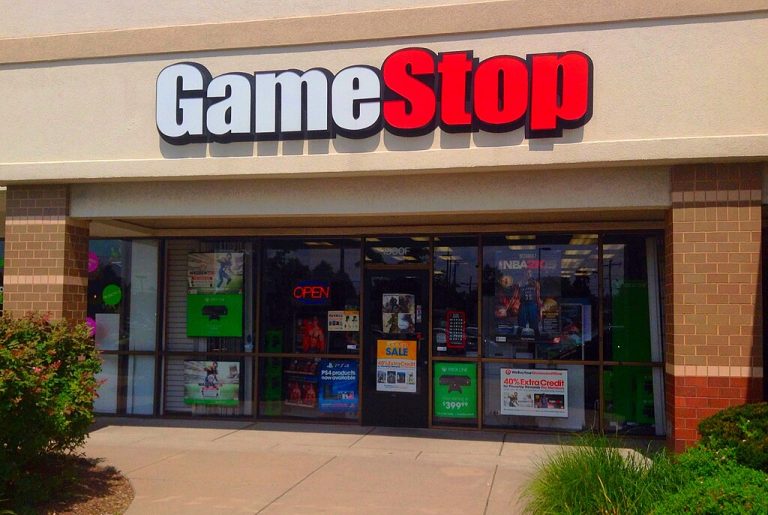GameStop began as Babbage’s in 1984, founded by Harvard classmates in a Dallas mall. After initial struggles, the company expanded to 160 stores by 1989. Strategic acquisitions followed, including Software Etc. in 1994. Barnes & Noble purchased the company in 1999 for $215 million before spinning it off as GameStop in 2002.
You’ll discover how this Texas startup transformed into a global gaming retailer with stores across multiple continents.
The Birth of Babbages: Harvard Classmates’ Vision (1983)
While many know GameStop as a retail giant today, its origins trace back to a small venture called Babbage’s founded in 1984 by Harvard Business School classmates James McCurry and Gary Kusin. These entrepreneurs opened their first store in a Dallas regional mall, creating what would become a revolutionary approach to selling video games.
You might be surprised to learn that Babbage’s initially struggled, losing $560,000 on just $3 million in sales during 1984. However, their business strategy—featuring competitive pricing, flexible store design, and enthusiastic sales staff—gradually paid off. By 1986, they’d broken even, and 1987 brought $1.16 million in earnings on $29 million in sales.
This Dallas-based venture expanded rapidly to 160 stores by 1989 before strategically refocusing on cost-control and inventory management. The company’s growth mirrors Garland’s development as a manufacturing hub with hundreds of businesses contributing to the local economy.
Early Growth and Stock Market Ventures (1987-1993)
After establishing its footing in 1986, Babbage’s experienced remarkable financial growth with earnings of $1.16 million on $29 million in sales by 1987. Within three years, the video game stores expanded to 160 locations, but this rapid retail growth eventually stressed finances. For the first time, the company faced declining stock value, prompting leadership to implement cost-control measures and improve inventory turnover.
The strategy worked. By 1990, revenues jumped 39% to $132.8 million with $4.1 million in earnings. New CFO Opal P. Ferraro helped boost profits further to $5.58 million by 1991. The company continued expanding with over 40 new stores in 1992, capitalizing on emerging technologies like Sega’s 16-bit CD-ROM peripheral.
This period set the foundation for Babbage’s acquisition of Software Etc. in 1994. Like many successful businesses in the region, Babbage’s benefited from Houston’s diversifying economy in manufacturing and energy.
Expansion Through Strategic Acquisitions (1994-1999)

Building on its earlier success, Babbage’s made its most significant strategic move in 1994 by acquiring Software Etc., a Minnesota-based software retailer, for $35 million. This bold maneuver expanded the company’s footprint to over 700 stores across North America.
Within two years, they rebranded as Babbage’s Etc., reflecting their growing enterprise. The newly expanded company quickly dominated the video game retail landscape, becoming a leading specialty retailer for PC entertainment software and console games.
Their rapid growth caught Leonard Riggio’s attention at Barnes & Noble, who acquired Babbage’s Etc. in 1999 for $215 million through a stock swap. Shareholders received shares in the book retailer’s gaming division, which also included Game Informer magazine. This acquisition laid the foundation for what would become GameStop Corporation.
Similar to how Texas Instruments transformed from oil exploration to semiconductors under Haggerty’s leadership, GameStop would undergo its own remarkable evolution in the retail space.
The Barnes & Noble Era and Corporate Transformation
Under Barnes & Noble’s ownership, Babbage’s Etc. underwent a transformation that would reshape the gaming retail landscape. The $215 million acquisition in 1999 marked a turning point for the company formerly known as Software Etc.
By 2002, Barnes & Noble executed a spinoff, launching GameStop Corp. as a public company with:
- Approximately 1,900 stores worldwide
- A business model centered on new and used video game sales
- Full ownership of Game Informer, a top gaming publication
You’d find GameStop’s expanding footprint primarily in strip malls and shopping centers, solidifying its position as America’s largest video game retailer—a far cry from its Babbage’s beginnings.
Going Global: International Market Penetration
GameStop set its sights on international markets in the mid-2000s, expanding beyond its American roots to become a truly global brand.
Its international growth began in 2005 with the $1.44 billion acquisition of Electronics Boutique, rebranded as EB Games. This immediately expanded GameStop’s footprint into Australia, Canada, Europe, and New Zealand.
The Rise and Fall of Physical Game Retail

As GameStop expanded globally, its core brick-and-mortar business model faced disruption. Once synonymous with new and used games across thousands of stores, the company now faced an existential challenge from digital distribution.
Each CEO faced three hard truths:
- Consumer demand shifted to digital downloads
- Pre-order delays alienated loyal customers
- Lack of retro strategy weakened long-term prospects
Though GameStop’s stock saw volatile surges, its pivot toward collectibles and digital accessories was insufficient. Analysts feared a possible Chapter 11 bankruptcy—a steep decline from its prior dominance.
Digital Disruption and Adaptation Challenges
The digital revolution struck GameStop’s business model hard. Just a few years prior, the company profited handsomely on used game sales, a margin-rich model no longer viable with services like Steam and Xbox Live.
As revenues declined, GameStop attempted to adapt. It acquired Kongregate in 2010 and increased its focus on collectibles, trying to prevent the fate of other struggling retailers. However, its digital platform launch failed to match losses from its retail base.
Caught between eras, GameStop began closing stores while fighting to reinvent itself. The pandemic only hastened these challenges, forcing a reckoning with a future where physical games may become obsolete.
Retro Gaming: Missed Opportunities in a Nostalgic Market
Why didn’t GameStop capitalize on the booming retro gaming trend? Despite experimenting with a retro-focused store in Austin, the concept wasn’t expanded.
GameStop’s missteps included:
- Limited rollout of retro stores to major cities like Dallas or Houston
- Underestimating nostalgic demand for classic consoles and cartridges
- Prioritizing used over vintage and collectible inventory
This oversight cost them significant market share as digital and retro became dual forces in gaming culture.
Customer Experience: From Trade-ins to Pre-order Problems
GameStop’s trade-in program was both innovative and controversial. While convenient, its low-value offers frustrated customers, especially during the high-volume holiday season.
Initially, pre-orders helped meet demand, but later shipping delays drove gamers toward digital platforms. Analyst Thomas G. observed, “GameStop prioritized margins over satisfaction—sacrificing long-term loyalty for short-term gains.”
Striking a balance between profit and positive in-store experience became a defining struggle for the company’s retail strategy.
Balancing Shareholder Demands With Gaming Culture
Since its rise, GameStop has battled between two competing missions: appeasing shareholders and honoring gamer culture. Under executives like Daniel DeMatteo, this tension grew more visible.
The struggle appeared in:
- Shifting from niche offerings to mass-market items
- Launching loyalty programs to retain customers
- Continuing pre-order delays that damaged reputation
As with past NeoStar leadership, GameStop still grapples with aligning Wall Street expectations with its core fanbase’s needs.


